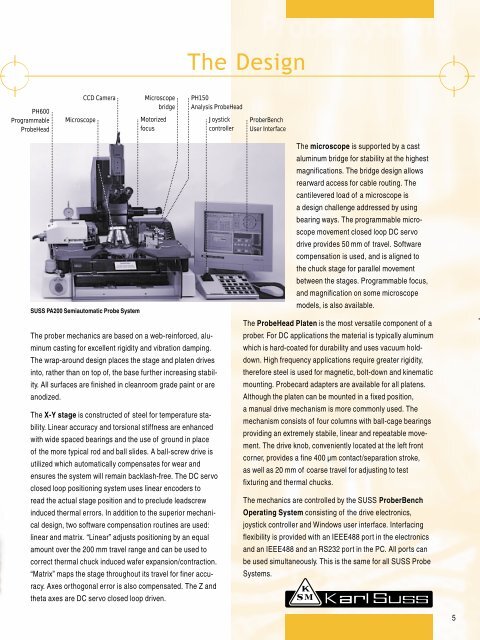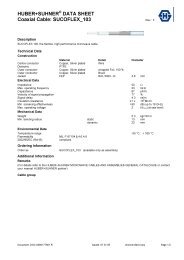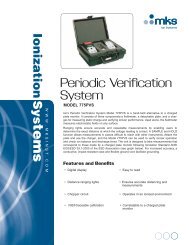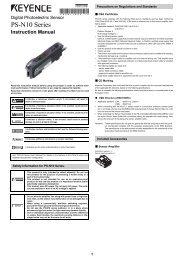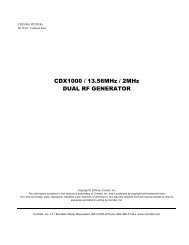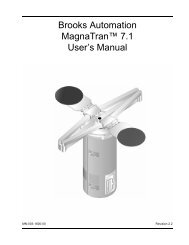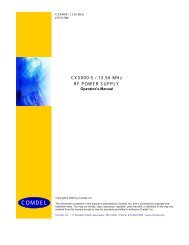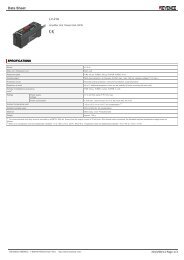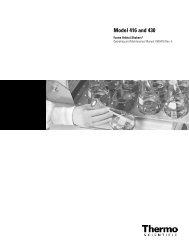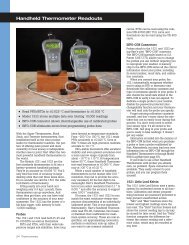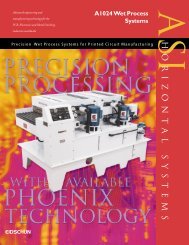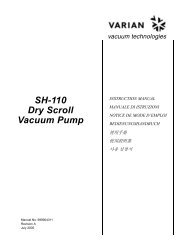Karl Suss Semiautomatic Probe System - CERN
Karl Suss Semiautomatic Probe System - CERN
Karl Suss Semiautomatic Probe System - CERN
You also want an ePaper? Increase the reach of your titles
YUMPU automatically turns print PDFs into web optimized ePapers that Google loves.
The Design<br />
PH600<br />
Programmable<br />
<strong>Probe</strong>Head<br />
Microscope<br />
CCD Camera<br />
Microscope<br />
bridge<br />
Motorized<br />
focus<br />
PH150<br />
Analysis <strong>Probe</strong>Head<br />
Joystick<br />
controller<br />
<strong>Probe</strong>rBench<br />
User Interface<br />
SUSS PA200 <strong>Semiautomatic</strong> <strong>Probe</strong> <strong>System</strong><br />
The prober mechanics are based on a web-reinforced, aluminum<br />
casting for excellent rigidity and vibration damping.<br />
The wrap-around design places the stage and platen drives<br />
into, rather than on top of, the base further increasing stability.<br />
All surfaces are finished in cleanroom grade paint or are<br />
anodized.<br />
The X-Y stage is constructed of steel for temperature stability.<br />
Linear accuracy and torsional stiffness are enhanced<br />
with wide spaced bearings and the use of ground in place<br />
of the more typical rod and ball slides. A ball-screw drive is<br />
utilized which automatically compensates for wear and<br />
ensures the system will remain backlash-free. The DC servo<br />
closed loop positioning system uses linear encoders to<br />
read the actual stage position and to preclude leadscrew<br />
induced thermal errors. In addition to the superior mechanical<br />
design, two software compensation routines are used:<br />
linear and matrix. “Linear” adjusts positioning by an equal<br />
amount over the 200 mm travel range and can be used to<br />
correct thermal chuck induced wafer expansion/contraction.<br />
“Matrix” maps the stage throughout its travel for finer accuracy.<br />
Axes orthogonal error is also compensated. The Z and<br />
theta axes are DC servo closed loop driven.<br />
The microscope is supported by a cast<br />
aluminum bridge for stability at the highest<br />
magnifications. The bridge design allows<br />
rearward access for cable routing. The<br />
cantilevered load of a microscope is<br />
a design challenge addressed by using<br />
bearing ways. The programmable microscope<br />
movement closed loop DC servo<br />
drive provides 50 mm of travel. Software<br />
compensation is used, and is aligned to<br />
the chuck stage for parallel movement<br />
between the stages. Programmable focus,<br />
and magnification on some microscope<br />
models, is also available.<br />
The <strong>Probe</strong>Head Platen is the most versatile component of a<br />
prober. For DC applications the material is typically aluminum<br />
which is hard-coated for durability and uses vacuum holddown.<br />
High frequency applications require greater rigidity,<br />
therefore steel is used for magnetic, bolt-down and kinematic<br />
mounting. <strong>Probe</strong>card adapters are available for all platens.<br />
Although the platen can be mounted in a fixed position,<br />
a manual drive mechanism is more commonly used. The<br />
mechanism consists of four columns with ball-cage bearings<br />
providing an extremely stabile, linear and repeatable movement.<br />
The drive knob, conveniently located at the left front<br />
corner, provides a fine 400 µm contact/separation stroke,<br />
as well as 20 mm of coarse travel for adjusting to test<br />
fixturing and thermal chucks.<br />
The mechanics are controlled by the SUSS <strong>Probe</strong>rBench<br />
Operating <strong>System</strong> consisting of the drive electronics,<br />
joystick controller and Windows user interface. Interfacing<br />
flexibility is provided with an IEEE488 port in the electronics<br />
and an IEEE488 and an RS232 port in the PC. All ports can<br />
be used simultaneously. This is the same for all SUSS <strong>Probe</strong><br />
<strong>System</strong>s.<br />
5


